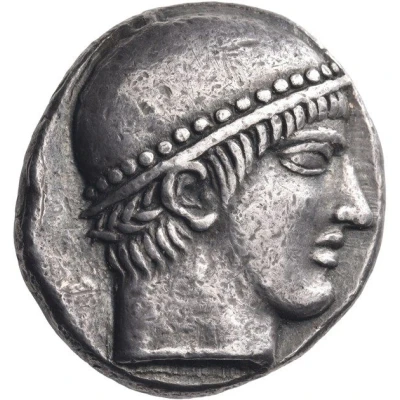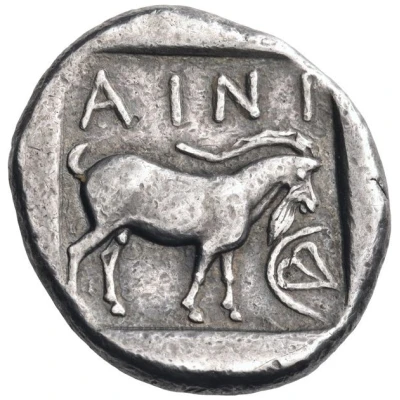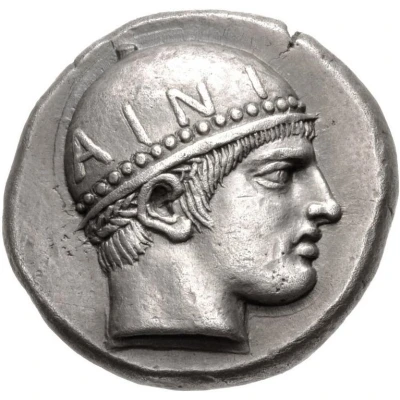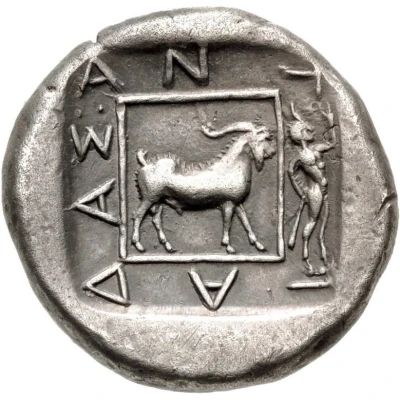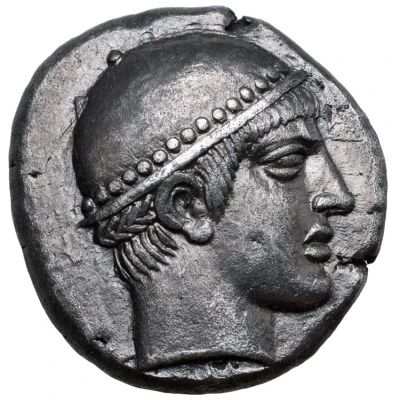
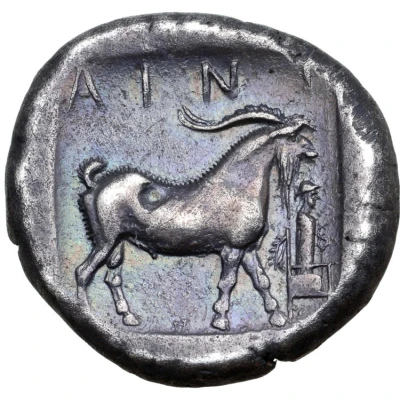

Tetradrachm 455 BC - 452 BC
| Silver | 16.26 g | 26 mm |
| Issuer | Ainos (Thrace) |
|---|---|
| Type | Standard circulation coin |
| Years | 455 BC - 452 BC |
| Value | Tetradrachm (4) |
| Currency | Drachm |
| Composition | Silver |
| Weight | 16.26 g |
| Diameter | 26 mm |
| Shape | Round (irregular) |
| Technique | Hammered, Incuse |
| Orientation | Variable alignment ↺ |
| Demonetized | Yes |
| Updated | 2024-10-10 |
| Numista | N#199077 |
|---|---|
| Rarity index | 97% |
Reverse
Goat standing right; ΑΙΝΙ above; to right, herm right and small kerykeion, both on garlanded throne; all within incuse square.
Script: Greek
Lettering: ΑΙΝΙ
Comment
Warren 458; Consul Weber 861; Hirsch 881; McClean 3820; Seltman, Greek 8.
The city of Ainos minted its first tetradrachms only after the expulsion of the Persians from northern Greece following Xerxes' defeat at Salamis in 480 BC. Minting was shortly suspended after the Athenian coinage decree of 449 BC until around 435 BC, but then continued until the Macedonian conquest.
The coinage of Ainos consistently displayed Hermes on one side and a goat on the other. The goat represents the source of Ainos' prosperity, and Hermes was the patron god of the city.
According to a poem by Kallimachos, the sculptor Epeios, who constructed the Trojan Horse, also made a wooden statue (xoanon) of Hermes that was washed out by the sea and later recovered by fishermen on the Hebros river. The fishermen assumed it to be a piece of driftwood and tried to burn it in their bonfire. When it failed to burn, the fishermen got scared and threw it back into the sea, which promptly cast it back again. The fishermen accepted it as a relic of the gods, and erected the sanctuary of Hermes Perpheraios (the Wanderer) at the future site of Ainos.
Interesting fact
The obverse (front) side of the coin features a portrait of the Greek goddess Athena, while the reverse (back) side depicts a stag, which was a symbol of the city of Ainos. This coin was used as a form of currency in the ancient Greek world and was valued at four drachmas, hence the name Tetradrachm.
Price
| Date | Mintage | VG | F | VF | XF | AU | UNC |
|---|---|---|---|---|---|---|---|
| ND (455 BC - 452 BC) | - | - | - | - | - | - |
Values in the table are based on evaluations by sales realized on Internet platforms. They serve as an indication only for Tetradrachm (455 BC - 452 BC) coin.
